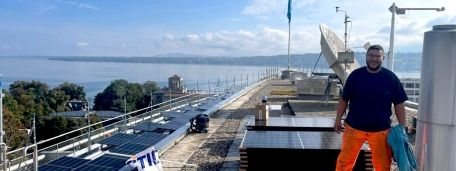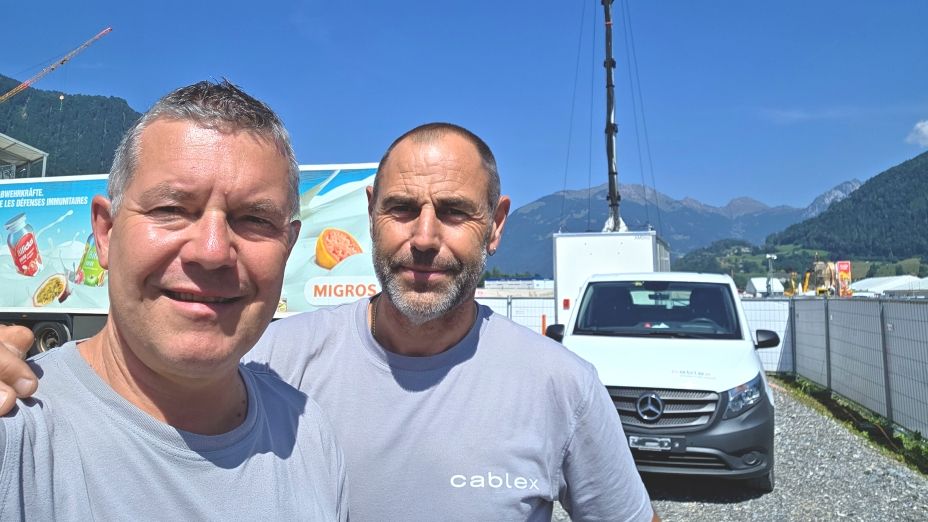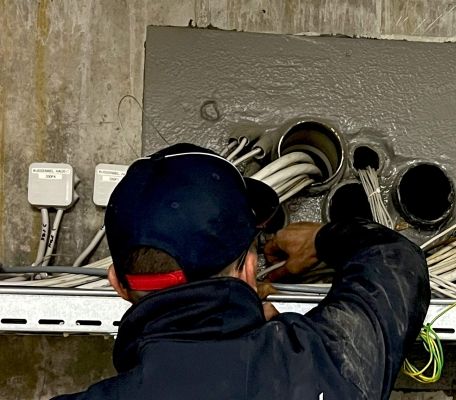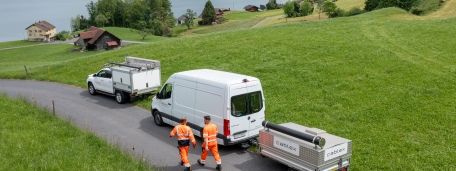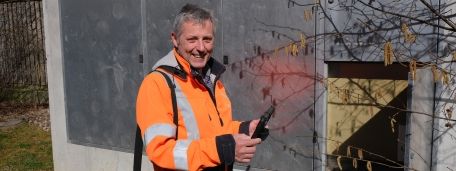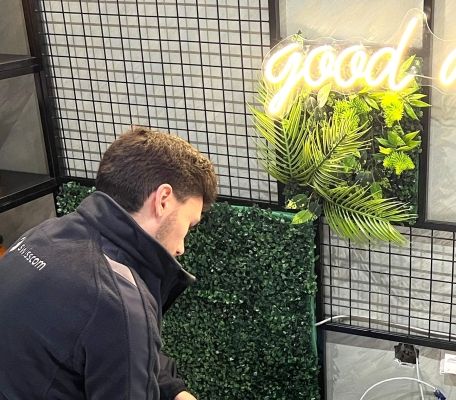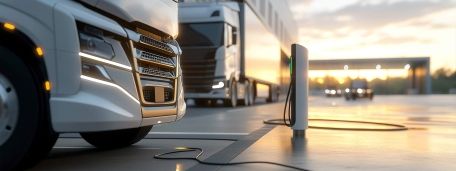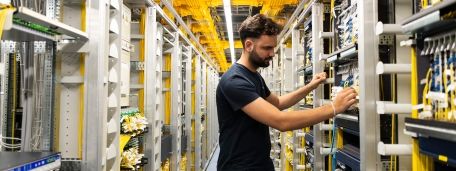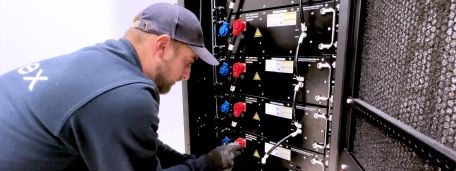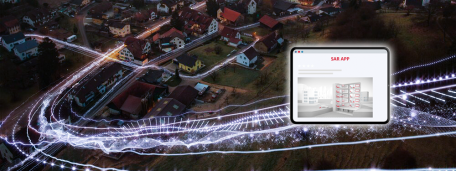
Two modern photovoltaic projects compared.
In Steffisburg, 166 modules were installed on a flat roof and on the façade, while in Ebikon 242 modules were installed on a pitched roof with a north-south orientation. The installation in Steffisburg involved extensive preparatory work such as vacuuming and renovating the roof and weighting the substructure with roof gravel and garden slabs.
In Ebikon, the focus was on optimising the use of energy. New lithium energy storage systems supplement the existing uninterruptible power supply (UPS) with lead-acid batteries. In principle, a modern energy management system opens up new business opportunities, such as the avoidance of peak loads, the utilisation of tariff fluctuations or participation in the balancing energy market.
Step by step towards a sustainable energy supply
Degree of independence and utilisation of photovoltaic systems.
A sustainable energy supply was favoured at both locations. As the technical equipment is associated with high energy requirements, the solar power plants (PVA) make a significant contribution to reducing energy costs whilst also increasing independence from the power grid. However, the degree of self-sufficiency between systems differs considerably.
- Steffisburg: The head office in Steffisburg was not initially connected to the fibre optic network and used the more energy-intensive copper technology. Following a two-year project to completely upgrade the local exchange with fibre optics, the annual electricity consumption will be reduced by 70 percent. The degree of self-sufficiency will also increase from 13 per cent to up to 52 per cent.
- Ebikon: Here, the photovoltaic system enables the building to be, at times, fully supplied with solar power on sunny days – even during the night. Safety is ensured using a modern battery system with a capacity of 160 kWh. When fully charged, the new batteries can supply the building with energy for an additional 4.5 hours. In combination with the OPzS batteries already installed, which offer a runtime of 3 to 4 hours, this results in a total autonomy of around 8 hours. The photovoltaic system (PVA) can further increase autonomy depending on weather conditions.
Grid feed-in and self-consumption.
In Steffisburg, most of the electricity generated is consumed directly. Both the system in Steffisburg and the system in Ebikon feed surplus energy that cannot be stored into the grid. This feed-in mainly takes place during the summer months, when the system's electricity yield exceeds its own consumption.

Customised energy solutions for individual needs.
Our projects show that individual and dynamic energy solutions can be realised for every customer – regardless of the structural conditions or specific requirements. In Steffisburg, not only did the installation of innovative façade systems generate energy efficiently, it also enhanced the visual appeal of the building. In addition to this, cablex took over the successful implementation of the sometimes complex authorisation procedures for the customer.
In Ebikon, cablex has developed a solution that combines battery technology and UPS systems to specifically expand the emergency power supply – a decisive improvement that is particularly beneficial for business applications in emergency situations.
Another example is the switch from copper to fibre optic technology in Steffisburg, which will reduce electricity consumption by more than 70 per cent in future – from 450 MWh to 120 MWh per year. This result shows how the combination of structural measures (conversion to fibre optics) used in conjunction with renewable energies can go hand in hand to reduce your energy costs and implement sustainable solutions.
Conclusion.
The projects in Steffisburg and Ebikon impressively demonstrate that photovoltaic systems can make an important contribution to a company's energy supply. At the same time, today's energy supply requires future-oriented thinking in order to fulfil current and future requirements with investment security. The experience of cablex serves as valuable orientation for future applications.
A sustainable, secure and cost-optimised energy supply is no longer a contradiction in terms – cablex accompanies the entire process from the first consultation to the successful implementation of the energy solution.
If you would like to find out more about the planning and installation of photovoltaic systems and the utilisation of energy in a dynamic environment, the experts at cablex will be happy to help.


